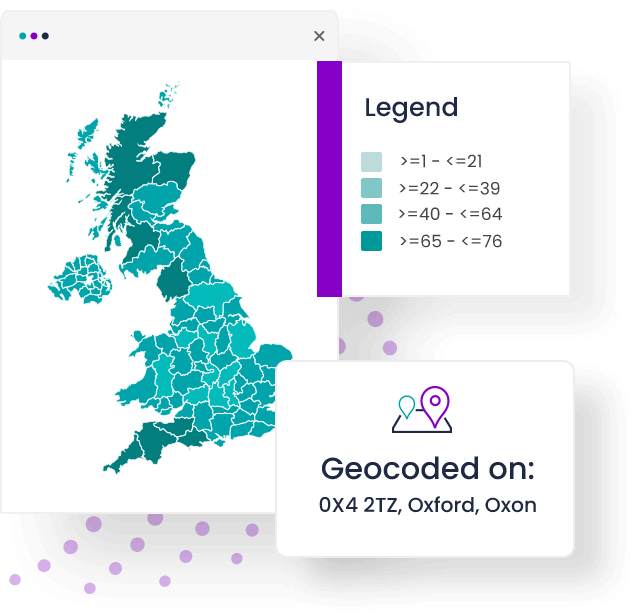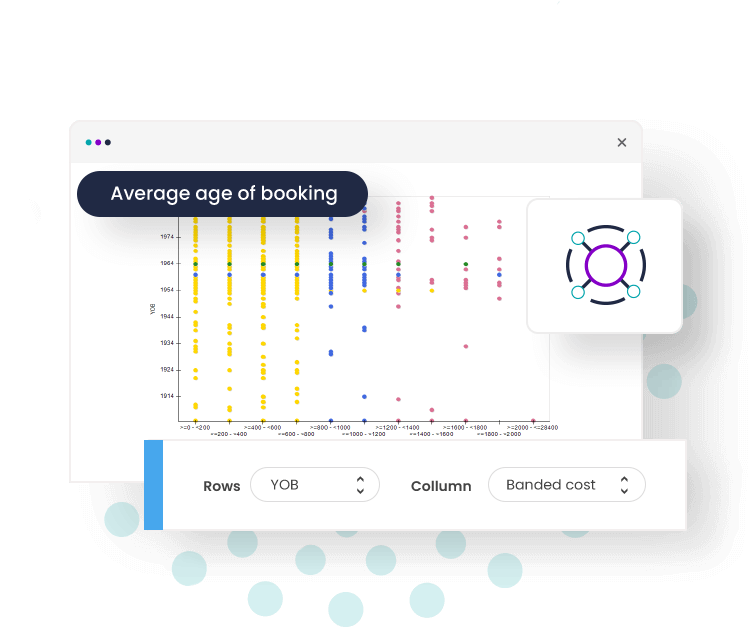"I want to build personas of different customer groups so that I can tailor campaigns with the right messages and relevant promotions"
"I don't want to put all my customers in one basket."
Why deliver the same experience for different customers?
Irrelevant marketing messages are a sure way of sending customers to your competitors. That's why customer segmentation is so important, allowing you to put the right message in front of each customer at the right time and through the right channel. And with so many ways to segment your audience, there are limitless ways for you to identify distinct personas and deliver targeted campaigns.

Carefully curate your campaign to segment customers based on a number of factors, such as age, gender, income, education, and family status. This ensures every segment receives communications relevant to their grouping.
The type of lifestyle a person leads can be a huge influence in ensuring your audience has relevant marketing communications. Analysis of their leisure activities and social or personal characteristics can help you maximise the performance of your campaigns.
A common source for customer segmentation data is data derived from buying behaviour. Especially around the recency, frequency, and monetary value (RFM) of purchases. This allows you to tailor content accordingly and increase loyalty or the likelihood of a transaction.
Apteco allows Greene King to manage significant complexity with multiple brands and customer touchpoints, all managed efficiently and effectively to create clear insight and identify the optimal customer strategy.
Paddy Purcell, Head of Customer Data and Analytics, Greene King
Geomarketing
Geographic location can significantly influence customer preferences, and people living in the same area often demonstrate similar buying behaviours. Geomarketing uses spatial information – such as postcode or latitude/longitude – and links it with actual and potential sales data. This enables marketers to take a fresh perspective on areas in terms of market penetration and purchasing potential.

Cluster analysis
Do you want to segment your customers but don’t know how? Cluster analysis looks for patterns in the data, establishes connections and forms homogeneous groups, or ‘clusters’. For example, you can use recency/frequency and engagement as a segmentation basis, which will offer a range of clusters based on common connections. This allows you to deliver relevant messages, tailored to each segment and so improve the performance of your campaign.

Ready to drive business growth and execute smart, automated campaigns that deliver?
Apteco empowers marketers by giving them control over their data and campaigns. Our end-to-end capability makes it easy for you to manage your marketing from start to finish.

All marketers will come across the term customer segments or customer segmentation during their career. This is because this approach to grouping, streamlining and targeting your customers is a sound and sensible way of contacting your customers with, hopefully, relevant content.
Customer segmentation data can be a way to better understand your customers – rather than seeing them as one homogenous group.
You can choose to target your customers in many ways, one of which is to target based on segments.
The benefits of customer segmentation are numerous, and the main benefits your business will experience will largely depend on your specific goals and business type. However, generally speaking, the main benefits of customer segmentation are:
- Get an insight into your customers
- Improve customer engagement
- Gain a competitive advantage
- Focus your efforts on the right people
- Improve your messaging to be more relevant
- Improve assessment of campaigns
Customer segmentation data analysis can provide you with more information about your customers than ever before and can then help you target them effectively. By building relationships with these customers through targeted marketing, you’ll boost retention rates and make your marketing campaigns more profitable than ever.
When conducting customer segmentation analysis, customer groups that have similar characteristics are grouped together. They can be divided into segments based on a wide range of characteristics and criteria. These can be socio-demographic, geographic, psychographic and behavioural characteristics.
Here are two common examples of customer segmentation analysis.
Identifying your top customers using RFM / RFV:
RFM / RFV analysis considers three transactional metrics, how recent a purchase was (Recency), how often someone has bought (Frequency) and the value of these purchases (Monetary / Value) and is an efficient customer segmentation tool to identify an organisation’s top customers. The result of this customer segmentation analysis can be best visualised in a Venn diagram.
Classifying customers by their lifetime value:
Another common method to allocate marketing activities and budgets efficiently is to differentiate customers by their expected lifetime value. Here, customer segmentation analysis helps to identify those customers with a low, medium and high customer lifetime value.
Apteco’s segmentation marketing software allows users to conduct a wide variety of customer segmentations, considering many aspects and combinations of customer characteristics and behaviour.
An effective and intuitive segmentation marketing software solution can help you thoroughly understand your customers better and will help you determine the best way to reach them based on their preferences, previous purchases, and current interests. Customer segmentation tools will also help you track and manage how customers move between different segment types, allowing you to make relevant adjustments where necessary.
With our customer segmentation tools, you can analyse very large data volumes at lightning speed. Easy to use drag and drop mechanisms allow you to conduct your customer segmentation analysis within seconds. You have a wide range of interactive data visualisation options at your disposal, including Venn diagrams, bar charts, pie charts, word clouds, charts, maps and much more, which will help you quickly identify relevant customer segments.
With the Apteco Orbit™ online platform, you can access your customer segmentation data from anywhere and easily share visualisations of your customer segments with your colleagues. Then, turn your insights into action by creating targeted customer segments directly from visualisations and upload data and automate campaigns using your existing martech stack and ESPs, or our campaign management tools.
Supercharge your email marketing
Integrated email builder with easy-to-use editor and templates
Design, automate and send responsive highly personalised emails directly from Apteco's marketing insights platform.
Related products
Apteco software tools to help you segment your customers.
Apteco Orbit™
Apteco's end-to-end actionable marketing insights platform, connecting you with your data. Connect people and channels, analyse data, target your audience, and manage campaigns – all on one intuitive platform.
Apteco FastStats®
Transform all your offline and digital data sources into easy-to-understand visuals that give you a total customer view. Analyse even the largest data sets to gain insight and improve campaign effectiveness.
Apteco PeopleStage™
Turn insights into action with the tools to create, manage, and deliver automated, personalised marketing campaigns across your channels.
We play nicely with others
By integrating Apteco software with your existing applications and tools, you can get one version of the truth and operate with greater accuracy and efficiency.
Related content
Access our range of resources relating to the features and benefits of customer segmentation


